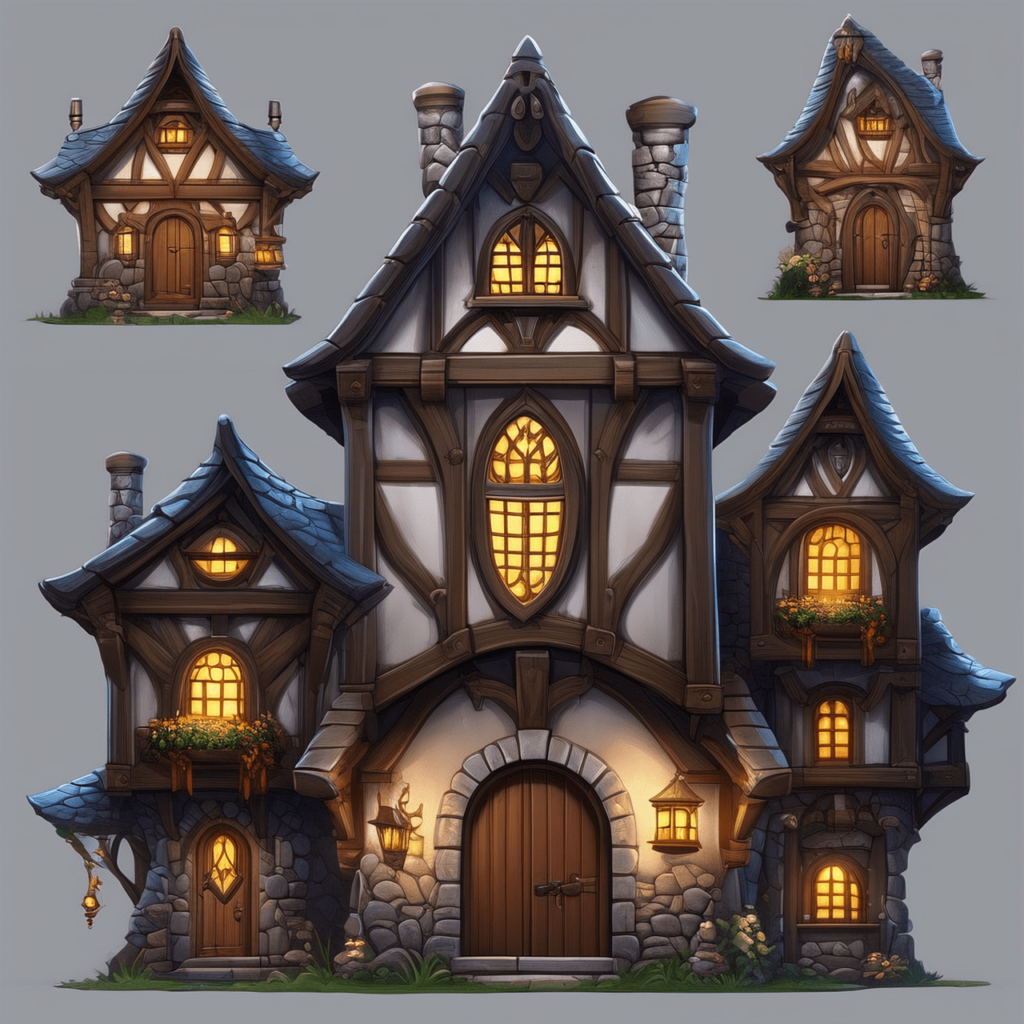Inside the World of How Game Development Studios Operate
In “Inside the World of How Game Development Studios Operate,” we delve into the fascinating and intricate world of game development, uncovering the behind-the-scenes processes that bring our favorite games to life. Together, we explore the collaborative efforts of various teams, from designers and programmers to artists and testers, highlighting the synergy required to create immersive gaming experiences. As we navigate through the stages of game development, we’ll discover the challenges, innovations, and passion that drive these studios to push the boundaries of what is possible in the gaming industry. Have you ever wondered how game development studios operate? Many of us enjoy playing video games, but few of us understand the intricate processes and dedication that go into creating these immersive experiences. The world of game development is a blend of creativity, technical skill, and teamwork. In this article, we’ll take you on a journey inside the world of game development studios, breaking down each aspect of the process so you can better appreciate the work behind your favorite games.

What is a Game Development Studio?
A game development studio is a company or a division within a larger company dedicated to creating video games. These studios can range from small indie teams with just a few members to large corporations employing hundreds of developers, artists, designers, and other specialists. Regardless of size, the primary goal remains the same: to produce engaging, fun, and marketable video games.
Indie Studios vs. Large Studios
Let’s explore the primary differences between indie studios and large studios.
| Feature | Indie Studios | Large Studios |
|---|---|---|
| Team Size | Small, often under 20 people | Large, can be several hundred |
| Budget | Limited, often self-funded or crowd-funded | Large, often funded by parent companies |
| Development Cycle | Flexible, can take several years | Strict deadlines, often dictated by publishers |
| Creative Control | Higher, more freedom to experiment | Lower, decisions often influenced by higher-ups |
| Risk | Higher personal and financial risk | Lower, backed by corporate resources |
Development Roles Within a Studio
A game development studio is comprised of various roles, each crucial to the game’s success.
- Game Designers: The visionaries who create the game’s concept and mechanics.
- Programmers: The technical experts who write the code.
- Artists/Animators: The creative minds behind the visual aspects.
- Sound Designers: The architects of the game’s audio experience.
- Producers: The managers who oversee the project.
- Quality Assurance Testers: The detectives who find and report bugs.
The Game Development Process
Creating a video game is a meticulous process that can be divided into several stages. Each stage is critical and requires the coordinated effort of various team members.
Concept Phase
Every game starts with an idea. This is where creativity takes center stage. During the concept phase, designers brainstorm ideas, develop game mechanics, and create storylines. This phase involves a lot of brainstorming sessions and whiteboard diagrams.
Pre-production
Once the concept is solidified, the pre-production phase begins. This involves:
- Creating a Game Design Document (GDD): A comprehensive guide that outlines the game’s mechanics, story, characters, and objectives.
- Prototyping: Building a basic version of the game to test ideas and mechanics.
- Planning: Setting a timeline, budget, and team structure.
Production
Production is where most of the development work happens. This is the longest phase and involves:
- Asset Creation: Developing all the visual and audio elements of the game.
- Programming: Writing the code that makes the game function.
- Level Design: Creating the various levels or stages within the game.
- Regular Testing: Continually testing the game to find and fix bugs.
Post-production
After the game is developed, the post-production phase ensures it is polished and ready for release. This includes:
- Final Testing: Rigorous testing to identify any remaining bugs or issues.
- Marketing: Promoting the game through various channels.
- Distribution: Releasing the game on various platforms.
Post-launch Support
Even after the game is released, the work doesn’t stop. Post-launch support involves:
- Patches and Updates: Fixing ongoing bugs and adding new features.
- Community Engagement: Interacting with players to gather feedback.
- Content Updates: Releasing additional downloadable content (DLC).
Tools and Technologies
Various tools and technologies are used at different stages of game development.
Game Engines
Game engines are crucial for developing games. They provide the backbone for creating and managing game environments. Some popular game engines include:
- Unity: Known for its flexibility and ease of use.
- Unreal Engine: Famous for its high-quality graphics.
- Godot: An open-source engine popular in indie development.
Development Software
From coding to asset creation, here are some essential development tools:
| Function | Popular Tools |
|---|---|
| Programming | Visual Studio, Xcode, JetBrains Rider |
| 3D Modeling | Blender, 3ds Max, Maya |
| 2D Art | Photoshop, GIMP, Krita |
| Audio Design | Audacity, FL Studio, Pro Tools |
| Project Management | JIRA, Trello, Asana |
Version Control Systems
Collaboration is a key component of game development. Version control systems help manage changes to the codebase and assets. Popular options include:
- Git: Distributed version control system.
- Perforce: Centralized version control system.
- SVN (Subversion): Another centralized version control system.
Additional Technologies
Additional tools such as Continuous Integration/Continuous Deployment (CI/CD) systems, analytics tools, and cloud services are also utilized to streamline development and ensure minimal downtime.
Challenges in Game Development
Game development is a rewarding yet challenging field. Let’s discuss some common hurdles developers face.
Deadline Pressure
One of the most significant challenges in game development is meeting deadlines. Games often have strict release dates, especially when set by publishers, and these deadlines can sometimes lead to “crunch,” which is a period of intense work often involving long hours.
Budget Constraints
Not all studios have a big budget. For indie developers, financial limitations can be a significant hurdle. Decisions have to be made on what features can be included, often leading to cuts in the scope of the project.
Technical Issues
Bugs and technical issues are inevitable. Identifying and resolving these problems can be time-consuming and frustrating. This is where thorough testing and Quality Assurance (QA) come into play.
Market Competition
The video game market is highly competitive. Standing out requires not just a great game, but effective marketing and community engagement. Additionally, the rapid evolution of technology means developers must continuously learn and adapt.

Success Stories and Case Studies
Learning from the success stories of others can be incredibly motivating. Here, we’ll explore a few case studies that exemplify the hard work, creativity, and collaboration involved in game development.
Indie Game: “Hades” by Supergiant Games
“Hades” is a rogue-like dungeon crawler that has earned widespread acclaim. Developed by a small indie team, the game captures players with its engaging storyline and unique mechanics.
- Key Factors for Success:
- Innovative game mechanics.
- Strong narrative and character development.
- Frequent player feedback integration.
AAA Game: “The Witcher 3: Wild Hunt” by CD Projekt Red
“The Witcher 3” is often cited as one of the best role-playing games ever made. Developed by a large team, the game boasts an expansive world, intricate storyline, and high-quality graphics.
- Key Factors for Success:
- Immersive world-building.
- Complex characters and storylines.
- High production values and attention to detail.
Mobile Game: “Among Us” by InnerSloth
Initially released with minimal attention, “Among Us” achieved viral success years later. This multiplayer social deduction game became a cultural phenomenon, thanks to its simple yet engaging gameplay.
- Key Factors for Success:
- Simple, accessible mechanics.
- Strong community and social engagement.
- Timely updates and additions.
Future Trends in Game Development
The game development landscape is ever-evolving, influenced by advancements in technology, changes in consumer behavior, and emerging trends.
Virtual Reality (VR) and Augmented Reality (AR)
VR and AR are transforming the way we experience games. These technologies offer immersive experiences that traditional gaming setups can’t match. As hardware becomes more accessible, we expect to see more titles leveraging these technologies.
Cloud Gaming
Cloud gaming promises to make high-quality gaming more accessible by streaming games to various devices. This trend democratizes access to high-end games, reducing the need for expensive hardware.
AI and Machine Learning
AI and machine learning are set to revolutionize game development. These technologies can enhance everything from non-player character (NPC) behavior to procedural content generation, speeding up development and creating more dynamic gaming experiences.
Indie Development Renaissance
With platforms like Steam and itch.io, alongside crowdfunding websites like Kickstarter, indie developers have more opportunities than ever to bring their projects to life. This burgeoning indie scene is leading to a diverse array of innovative and experimental games.
Cross-platform Play
Cross-platform gaming is becoming the norm, allowing players to enjoy games with friends regardless of the device they own. This trend fosters a more inclusive gaming community and extends the lifespan of games.

Conclusion
Understanding how game development studios operate gives us a deeper respect for the video games we love. From the initial concept phase through post-launch support, creating a video game requires coordination, creativity, and perseverance. Whether it’s a small indie team or a large corporation, every member plays an essential role in bringing virtual worlds to life.
The next time we pick up a controller or tap on our mobile screens, let’s take a moment to appreciate the incredible effort and passion that goes into game development. As technology continues to advance and new trends emerge, the future of gaming looks brighter and more exciting than ever.
Feel free to share this article with your friends or leave a comment if you have more questions about the fascinating world of game development studios. Until then, happy gaming!



